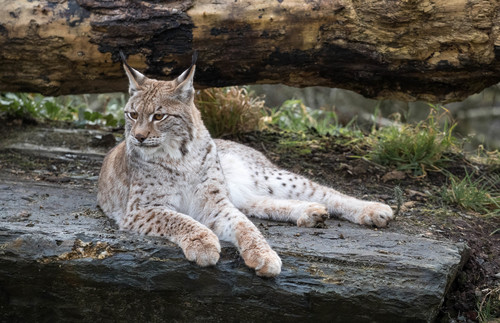
Eurasian lynx
The Eurasian lynx, with its tufted ears and striking coat, is a masterful solitary hunter of Europe's woodlands. Known for its elusive nature, it silently stalks prey, maintaining the delicate balance of its ecosystem. This majestic feline is a symbol of wilderness and biodiversity.
18.14 - 36.29 kg
Weight
Length: 69 - 130 cm; Height: 56 - 76 cm
Size
Grey, Yellow, Red, Black
Color
2-3 years
Age of Sexual Maturity
Least Concern
Conservation Status
Stable
Population Trend
Characteristics
The Eurasian lynx (Lynx lynx) is a medium-sized wild cat native to European and Siberian forests. It features tufted ears, a short tail with a black tip, and a distinctive ruff under its neck. This solitary predator primarily hunts deer and hares, playing a crucial role in controlling prey populations.
Distribution Range of the Eurasian lynx
The Eurasian lynx is native to broad regions across Europe and Asia. Its geographical distribution spans from Northern, Central, and Eastern Europe through Russia, and extends into Central Asia, including regions such as the Himalayas and the Tibetan Plateau.
Eurasian lynx's Habitat
Environmental Conditions
The Eurasian lynx typically inhabits temperate and boreal forests, including both deciduous and coniferous woodlands. It is also found in mountainous regions with dense vegetative cover that provides ample cover for hunting. The climate in these regions can vary from cold temperate to subarctic, with significant seasonal changes.
Ecological Niche
As a carnivorous predator, the Eurasian lynx occupies a niche where it primarily preys on medium-sized ungulates such as roe deer, as well as smaller mammals and birds. It requires large territories to support its hunting needs and relies on dense understory for stalking prey. The lynx's adaptations include keen eyesight and hearing, which are essential for its solitary hunting lifestyle in expansive, forested areas.
Copyright @ Nature Style Limited. All Rights Reserved.
 English
English